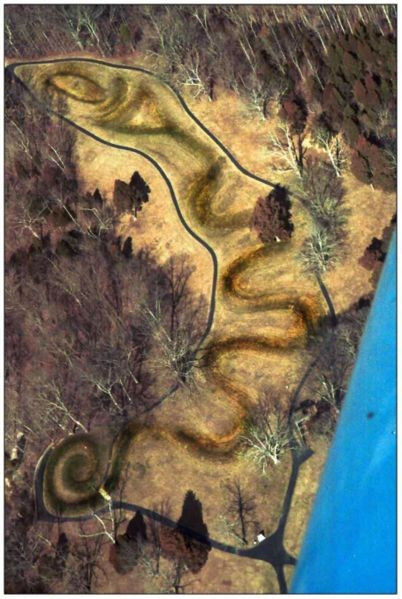Mysterious Ancient Animal Mounds Discovered in Peru

Huge pre-historic animal mounds made by humans dating back to thousands of years have been discovered along the coastal plains of Peru for the first time by a university of Missouri researcher.
Robert Benfer, an anthropology professor emeritus, using google earth to scan satellite images for some other project accidentally stumbled on these huge prehistoric mounds in the region renowned for the ancient Nazca lines, a series of ancient geoglyphs located in the Nazca Desert in southern Peru. Similar mounds such as the great serpernt mound in Ohio, US have earlier been found.
Benfer and his team found 10 giant mounds and 150 smaller mounds in fields revealing different shapes of animals. Of the 150 smaller mounds only 10 remain now, reported Discovery News.They found mounds that were shaped like an orca, an animal regularly hunted in ancient times. The effigy is said to date to approximately 5,000 years ago.
He also found condor-shaped animal mounds, large vultures with mainly black plumage, bird-like mounds, duck shaped mounds and even monster mounds. All these animal mounds were ranging in different sizes from 16.5 to 1,312 feet long.
"The finding of animal effigy mounds where there were none before changes our conception of early Peruvian prehistory," Discovery quoted Benfer as saying.
"That they probably represent the Andean zodiac is also a new find. A controversial interpretation of some Nazca figures as representations of the zodiac is supported by these mounds," he added.
According to Benfer the mounds were possibly built using woven baskets to carry and pile up rock and soil.
He said that the mounds are disapearing fast and added that they needed to be protected as historical sites.
The new finds have been published in the journal Antiquity.
Click here to look at sattellite pictures of ancient animal-shaped structures found in Peru
Also Read: IBM to Build Low-Power Exascale Supercomputer to Study Universe [VIDEO]
© Copyright IBTimes 2025. All rights reserved.





















